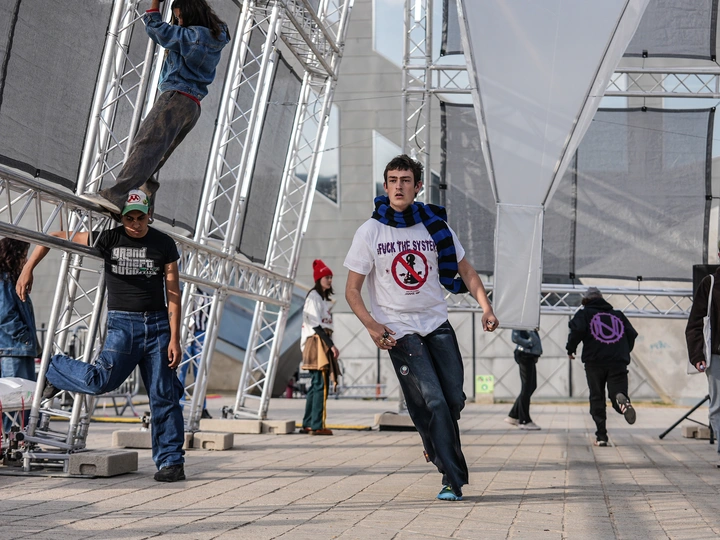Free Air - Towards a Performative Architecture

Daryan Knoblauch (1992*) is an iranian/german architect, designer and researcher. He was educated at the Architectural Association in London where he graduated with distinction in 2021. Before, he pursued a MSc at KU Leuven in Belgium and a B.Arch at the Alanus University of Arts and Social Science in Germany. He has been trained as an Architect at 51N4E in Brussels, KAVA in San Fransisco and Team51.5 Architects in Wuppertal/London.
After gathering years of experience within practice and academia, Daryan launched the eponymous studio in early 2023. His practice aims to fuse elements of contemporary culture, nature and technology, while using architecture as a medium of communication, devoted to explore space through build design and research. Space production is hereby understood as a highly collaborative effort in which the practice operates at its best within the Public Realm in close conversation with Artists, Performers, Musicians such as Curators among others.
Every project takes pivotal ecological and social questions as its venture point while drawing inspiration from cutting edge design language to address an audience with the most inclusive means possible. Radical Architecture foreseen as a threshold that mediates between high and youth culture is the modus operandi of this young practice in the making.
Daryan currently teaches at the Architectural Association in London where he was appointed as a Studio Master right after his graduation in 2021. He taught as an Assistant Professor at the Bergische Universität Wuppertal from 2022 till 2023.
His studies at the AA have been made possible by receiving the DAAD-Full-Research-Scholarship-20/21 from the German Academic Exchange Service. Prior to that he received the BDA-Master-Award for the best design Thesis in Germany (2019) by the German Chamber of Architects and the Deutschland Stipendium (2018) by the Federal Government of Education for outstanding academic achievements.
Free Air is a public gathering machine devoted to the element that connects cosmic dust with the lungs that we carry within our body: Air. Designed as a performative architecture, Free Air contributes to Barcelona's environment through its reflective surface which harvests No2 from the air. By doing so, the temporal pavilion cleans air to the equivalent of taking 80 cars of the streets of Barcelona during the time period of the Architecture Festival Model run by the Fundaciò Mies van der Rohe, curated by Eva Franch I Gilabert. The installation focuses on the invisible qualities of air by helping us to see, contemplate, measure and understand a natural resource which, due to the amount of man-made pollution, is threatening the health condition of all citizens alike. Free Air, which due its photocatalytic coated texture, purifies and improves the condition of the air wherever it is placed, creates a meeting place for our current generation, and the generations to come. The pavilion is conceived as a research by design project and unfolds its means through various material strategies. Lightness, consistency and performativity are defined as the underlying design qualities for a new millennium and allude to the spatial manifestation of Free Air as a reversible, scalable and sustainable structure.
The reflective, perforated surface is carried by a reusable structure that also supports several gadgets, like mirrors, solar panels and water collectors, that allow it to interact with its surroundings in visible and invisible ways. Air and its quality is measured and communicated through several technical instalments outside and within the installation, through LED ticker strips that count the amount and quantity of purified CO2 particles, screens within the pavilion that locate the pollution of air within Barcelona, and presentations that expose how the subject matter is addressed within other disciplines including photography, fashion, music and pop culture at large.